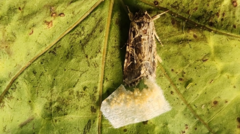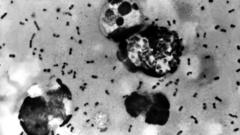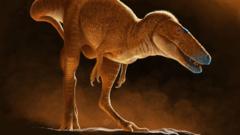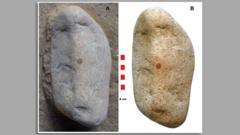**The discovery provides a glimpse into a diverse prehistoric ecosystem that existed during the Triassic period.**
**Ancient Flying Reptile Species Discovered in North America**
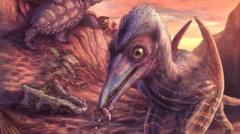
**Ancient Flying Reptile Species Discovered in North America**
**New findings reveal the earliest pterosaur, Eotephradactylus mcintireae, from 209 million years ago.**
Scientists have announced the discovery of a new species of pterosaur, an ancient flying reptile that existed over 200 million years ago. Dubbed Eotephradactylus mcintireae, which translates to "ash-winged dawn goddess," this remarkable creature was identified through the analysis of a jawbone recovered in Arizona back in 2011. Utilizing advanced scanning technology, a team of researchers at the Smithsonian's National Museum of Natural History unveiled new details, classifying this specimen as a new species.
Dating back approximately 209 million years, Eotephradactylus mcintireae is now considered the oldest pterosaur found in North America. Dr. Ben Kligman, a key researcher in the study, highlighted the challenge of preserving pterosaur bones, which are often small and fragile. The significant find was made at a fossil site within the Petrified Forest National Park, an area that, during the Triassic period, functioned as a riverbed where sediment layers encased an array of biological remains.
The jawbone, about the size of a seagull, is part of a larger collection of fossils that includes not only bones but also fish scales, teeth, and coprolites, or fossilized feces. Dr. Kligman noted that the distinctive wear on the pterosaur's teeth suggests it consumed hard-bodied prey, likely primitive fish adorned with bony scales.
The fossil bed in the Petrified Forest allows scientists to glimpse an ancient ecosystem teeming with diverse life forms. It illustrates a time when ancient large amphibians, armored crocodile ancestors, and modern-day creatures such as frogs and turtles coexisted. The findings signify a crucial evolutionary snapshot, revealing groups of animals that thrived in later periods alongside older species that perished after the Triassic.
The discovery sheds light on the complexity of prehistoric life and hints at the presence of other similar fossilized pterosaur remains waiting to be unearthed from Triassic deposits around the globe. This ongoing research enhances our understanding of evolutionary transitions that unfolded more than 200 million years ago, providing a richer picture of life during a pivotal period in Earth’s history.

